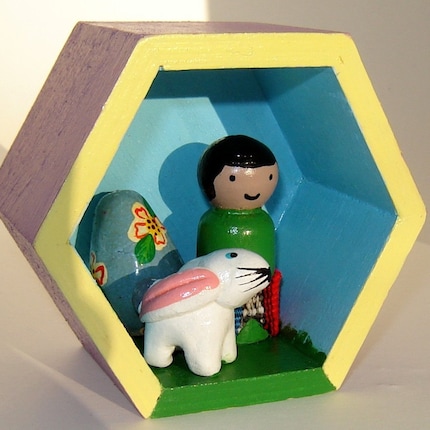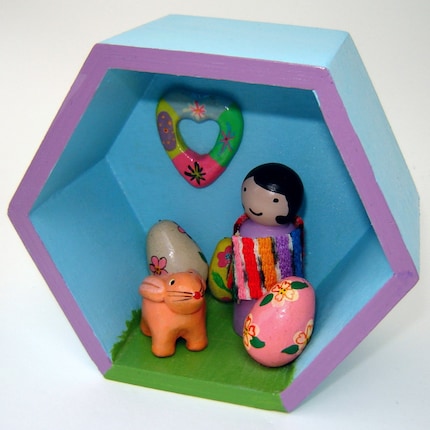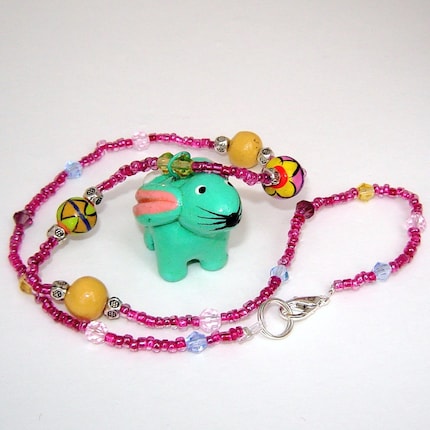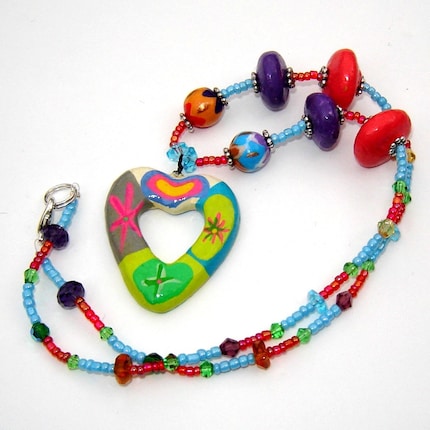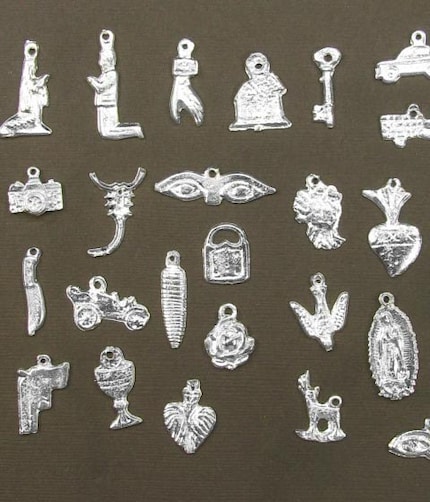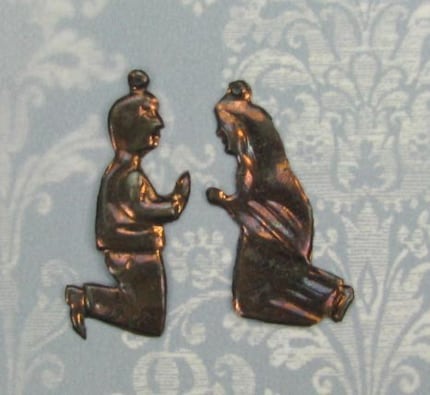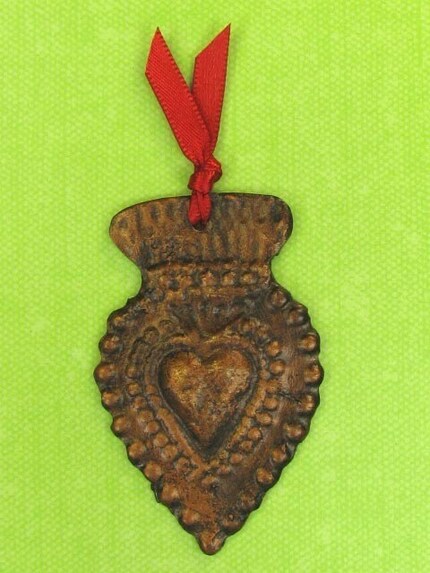Thursday, March 26, 2009
Giveaway!
Hurry - She'll be choosing a winner tomorrow (Friday) at 8pm Eastern :)
Tuesday, March 24, 2009
Easter Stuff
Tuesday, March 17, 2009
Adoptive Moms in Business
Monday, March 16, 2009
Milagros
Milagros, also known as an ex-voto or dijes, are religious folk charms that are mostly made in Mexico but are also produced in some other countries of Central and South America. Milagros are an old tradition, used for healing purposes and as votive offerings in Mexico and areas of United States. In Spanish, the word "milagro" means "miracle".
Milagros come in a variety of shapes and sizes, and they might be nearly flat or fully three-dimensional; and they can be made out of gold, silver, tin, or lead.
As part of a religious ritual or an act of devotion, milagros can be offered to a symbol of a saint as a reminder of a petitioner's particular need, or in gratitude for a prayer answered. They are used to assist in focusing attention towards a specific ailment, based on the type of charm used. Milagro symbolism is not universal; a milagro of a body part such as a heart might represent different ideas such as a heart condition, a romance, or any number of other interpretations. Milagros are also carried for protection and good luck!
Milagros are often found as components in necklaces, earrings and other jewelry. They can be a basic part of your inspiration in turning an idea into a beautiful piece of art!
Friday, March 13, 2009
Guatemala Fabric and Bead Mirror Project
Materials:
--wood framed craft mirror with flat front (my frame is approximately 9 1/4" X 11 1/4").
--acrylic paints in your choice of one or two bright colors
--varnish (I used Delta Creamcoat Satin Interior Varnish.)
--paint brush
--scissors
--Guatemalan fabric scraps (you can purchase Guatemalan fabric scrap samplers here)
--Guatemalan beads with flat backs (I used butterflies; others in my shop that have flat backs include the little girls and boys, turtles, suns, palm tress, and more).
--tacky glue
--FrayCheck or other substance used to prevent fabric fraying
--small wire cutters (optional, used if you want to remove little hoops from the top of the beads)
Directions:
A. Painting/Varnishing
1. Remove mirror from the back of the frame so you can begin painting.
2. Paint the front and sides of your frame in one or two bright colors. I chose blue and yellow. Let dry and apply second coat if necessary, allowing that to dry too.
3. Use paintbrush to apply two coats of varnish (allowing to dry between coats). Be sure to smooth out any bubbles that may appear.
B. Decorating
1. Cut out four strips (mine are about 1/4" wide) of Guatemalan fabric to frame the hole the mirror goes in.
2. Apply Fray-Check to fabric edges.
3. Glue strips of fabric to the frame.
4. Cut out 10 squares of Guatemalan fabric. The squares on my mirror are about 3/4", but you can choose how big you want yours. You could also vary this by cutting out hearts or circles instead of squares.
5. Apply Fray-Check to fabric edges.
6. Spacing them out evenly, with one in each corner, glue the squares to the frame. I set mine on an angle.
7. Select 10 Guatemalan flat-backed beads. If you opt to remove the metal hoops, use the wire cutters at this step (adult supervision strongly suggested for tweens doing this project).
8. Glue the beads onto the frame between your fabric shapes.
C. Final Steps
1. Allow glue to dry.
2. Place mirror back in the frame.
3. Hang and enjoy!
Monday, March 9, 2009
More Vintage Kitsch
Wednesday, March 4, 2009
Prayers in Paint
I remember the first time I saw a retablo – vibrant colors highlighted a family kneeling in prayer at the bedside of a sick relative while the Virgin Mary looked on in a circle of light up in the corner. Beneath the image was a description with specific details of the illness and the cure that was brought about through divine intervention by the Blessed Mother answering the family’s prayers.
I loved it! I loved the color; I loved the simple devotion of the family; I loved the thought that the saints were hovering over us to answer our prayers; I loved the idea of a thank-you note done in paint to commemorate the miraculous event! I was hooked and decided to learn more about this style of painting and to try it myself.
Retablos are paintings that serve as visible reminders of the power of prayer. I’ve found two general types:
- A painting of a saint, the Virgin Mary, or religious grouping such as the holy family that has been done like a portrait. These could be hung in the home just as we might hang pictures of beloved family members that we don’t see very often.
- A painting that depicts an event in which someone prayed to a saint or Jesus and received divine help in a specific situation. These retablos follow a familiar pattern with the “action scene” taking up the most room, the saint appearing higher up observing what’s happening, and a section at the bottom that describes what was going on, which saint was prayed to, and then thanking the saint for help with the situation. This type of retablo might be hung in a church or in the home as a public way of thanking the saint for his or her help.
Mexican retablos (also known as laminas) are the most well-known and reached the peak of their popularity at the end of the 19th century. Typically they were painted on tin, but could also be on wood. A retablo artist (or retablero) might set up shop outside a church with several stock images that could have the details filled in as requests for the paintings were made. These artists were generally untrained and their paintings are simple and primitive, but could also show great detail and emotion.
I’ve attempted both “portrait” retablos and “action” retablos. Many people like portrait retablos for gifts. I’ve done one for my husband who has a special devotion to St. Ignatius and have one hanging in my shop of my favorite saint, Therese of Lisieux.
The action retablos are a little more challenging – maybe because I haven’t done as many of them. I’m trying to rely less on training and more on emotion as I do them and remember that they don’t have to be perfect! Really, that’s what I liked so much about retablos in the first place. Their simplicity of faith and simplicity of style convey faith in answered prayers.

